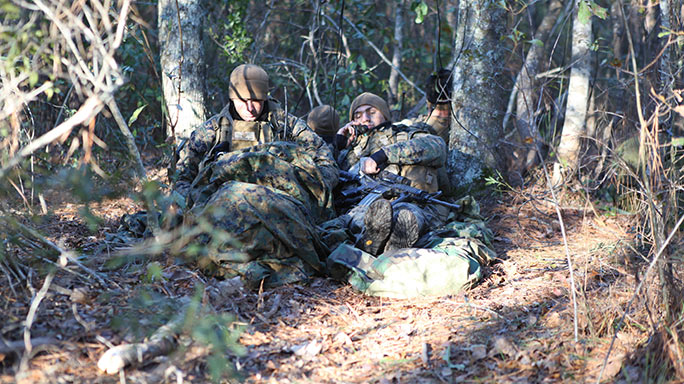The following is a press release from Mathuel Browne, Marine Corps Systems Command:
Marine Corps Systems Command is equipping Marines with a smaller, lighter, longer-lasting measurement and signature intelligence sensor to keep them one step ahead of the enemy.
- RELATED STORY: Active Duty, Reservist Marines Conduct Tank Field Exercises
Fielded six months ahead of schedule this June, the Magnetic Intrusion Detector II can be easily concealed and provides ground sensor platoons the capability for remote surveillance using unattended sensors. MAGID II is used to detect vehicles and rifle-sized targets moving within its electromagnetic fields.
Advertisement — Continue Reading Below
“We fielded the MAGID II early to Marine Corps intelligence squadrons,” said John Covington, project officer for the Tactical Remote Sensor System in MCSC’s Marine Intelligence program office. MAGID II is part of the Corps’ Unattended Ground Sensor Set, a Tactical Remote Sensor System component. “The new device is 50 percent smaller, 33 percent lighter and uses 32 percent less energy than its predecessor. The modernized MAGID provides not only target detection and direction information, but also magnetic disturbance readout, indicating the size of the target.”
The improved MAGID II is easier for Marines to use and harder for enemy combatants to locate. MAGID II also improves on the original device’s capability, which was unidirectional, meaning it could not detect moving objects not in its line of sight.
“The new MAGID II is multi-directional, meaning the magnetic changes can be detected no matter where the device is pointed,” said Covington.
Advertisement — Continue Reading Below
MAGID II works in concert with the larger suite of UGSS devices that detect seismic, acoustic and infrared activity in addition to MAGID II’s magnetic detection capability. Covington said these remote sensor capabilities allow continuous surveillance of key areas, which give operational leaders better situational awareness in theater with less manpower than the previous system.
“MAGID II is important because it opens up the battle space awareness of the unit commander with information they would normally not have,” said Covington. “Without remote sensors, the intelligence obtained would only be accessible if designated personnel were stationed in the location doing surveillance.”
By reducing the number of Marines required for surveillance operations and increasing the accuracy for remote detection of enemy combatants, MAGID II helps the Corps ensure Marines never get into a fair fight.
Advertisement — Continue Reading Below
MCSC’s program office for Marine Intelligence provides integrated intelligence, surveillance and reconnaissance capabilities to Marine intelligence units. Their portfolio includes systems used for the collection, analysis, use and dissemination of various forms of intelligence-related information.
























